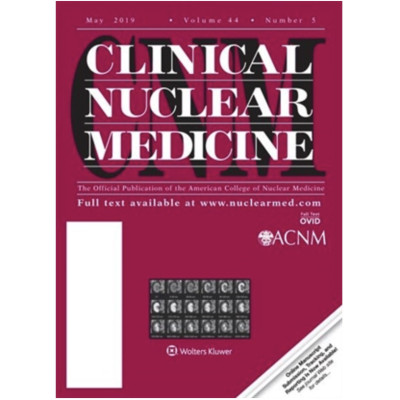Publication
18F-Fluorocholine PET/CT in the prediction of molecular subtypes and prognosis for gliomas.
A.M. Garcia Vicente, J. Perez-Beteta, M. Amo-Salas, F.J. Pena Pardo, M. Villena, H. Sandoval, M. Mollejo, R. Barbella, C.J. Klein, J.M. Borras, A.M. Soriano, V.M. Pérez-García
Clinical Nuclear Medicine 44(10) e548-e558 (2019).
MOLAB authors
Abstract
Aim: To study the association of metabolic features of 18F-fluorocholine in gliomas with histopathological and molecular parameters, progression-free survival (PFS) and overall survival (OS).
Methods: Prospective multicenter and nonrandomized study (Functional and Metabolic Glioma Analysis). Patients underwent a basal 18F-fluorocholine PET/CT and were included after histological confirmation of glioma. Histological and molecular profile was assessed: grade, Ki-67, isocitrate dehydrogenase status and 1p/19q codeletion. Patients underwent standard treatment after surgery or biopsy, depending on their clinical situation. Overall survival and PFS were obtained after follow-up. After tumor segmentation of PET images, SUV and volume-based variables, sphericity, surface, coefficient of variation, and multilesionality were obtained. Relations of metabolic variables with histological, molecular profile and prognosis were evaluated using Pearson ?2 and t test. Receiver operator caracteristic curves were used to obtain the cutoff of PET variables. Survival analysis was performed using Kaplan-Meier and Cox regression analysis.
Results: Forty-five patients were assessed; 38 were diagnosed as having high-grade gliomas. Significant differences of SUV-based variables with isocitrate dehydrogenase status, tumor grade, and Ki-67 were found. Tumor grade, Ki-67, SUVmax, and SUVmean were related to pro- gression. Kaplan-Meier analysis revealed significant associations of SUVmax, SUVmean, and multilesionaly with OS and PFS. SUVmean, sphericity, and multilesionality were independent predictors of OS and PFS in Cox regression analysis.
Conclusions: Metabolic information obtained from 18F-fluorocholine PET of patients with glioma may be useful in the prediction of tumor biology and patient prognosis.














